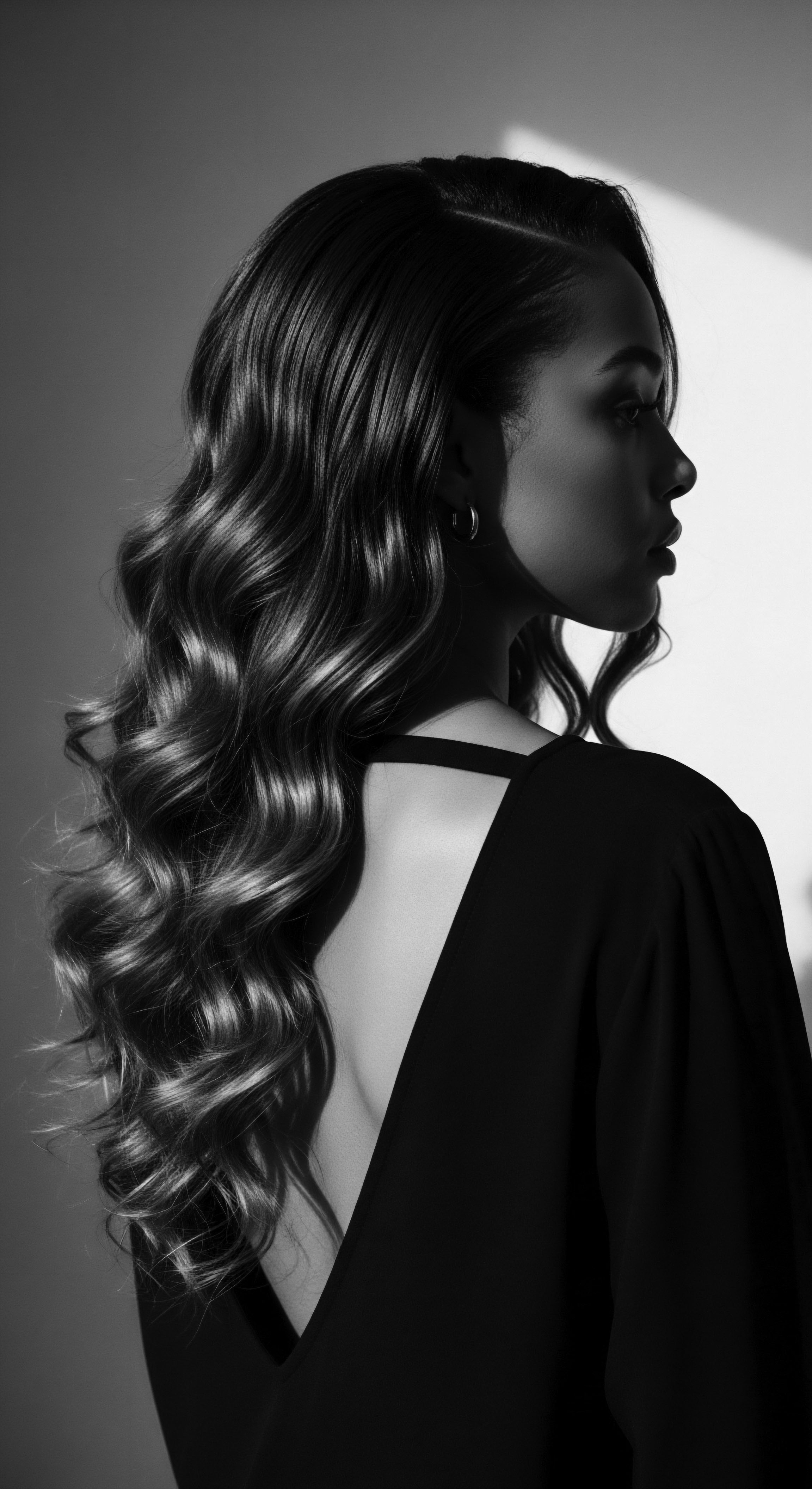
Roots
Consider for a moment the resilient spirit held within each coil, each curl, a lineage whispered through generations. For those with richly textured hair, the journey of cultivating length is often a deeply personal act, a testament to patience and ancestral wisdom. It is a path shaped by more than mere product application; it is woven with intention, knowledge passed down, and practices that honor the very structure of our strands.
Within this living archive of textured hair heritage, the Basara Chebe practice stands as a beacon, a tradition rooted in the arid lands of Chad, offering profound insights into nurturing hair for enduring growth. It asks us to look beyond quick fixes and to witness the efficacy of ancient care rituals.
For centuries, the Basara Arab women of Chad have been revered for their exceptionally long, strong, and voluminous hair, often cascading past their waists. Their secret, rather than a singular discovery, lies in the consistent application of a finely ground herbal powder known as Chebe. This practice, far from a fleeting trend, is a time-honored ritual, a testament to generations of lived experience and deep understanding of how to protect hair in harsh desert conditions. It is a dialogue between human hands and the earth’s offerings, yielding remarkable results in length retention.

Hair’s Elemental Structure
To truly appreciate the Basara Chebe practice, we first consider the very nature of textured hair. Unlike straight hair, the elliptical shape of a textured hair strand, with its unique bends and twists, makes it inherently more susceptible to dryness and breakage. The cuticle layers, those outermost scales protecting the hair’s inner cortex, tend to be raised in textured hair, allowing moisture to escape more readily.
This structural reality, deeply understood by those who have lived with and cared for such hair across ages, underscores the need for practices that prioritize moisture sealing and strand fortification. It is here that the ancestral wisdom of Chebe finds its biological grounding.
The Basara Chebe practice offers a compelling example of ancestral knowledge meeting the biological realities of textured hair for length preservation.
The growth cycle of hair, typically proceeding through anagen (growth), catagen (transitional), and telogen (resting) phases, remains constant across all hair types. However, for textured hair, the challenge is not necessarily a slower growth rate from the scalp, but rather the retention of that growth. Hair that grows may not appear to gain length if it continually breaks at the ends. The length we observe is a direct consequence of how much hair we keep, not merely how quickly it emerges from the follicle.
This subtle but profound distinction is central to understanding the Basara Chebe practice. It doesn’t magically accelerate hair from the root, but rather creates an environment where existing growth can flourish and remain intact.
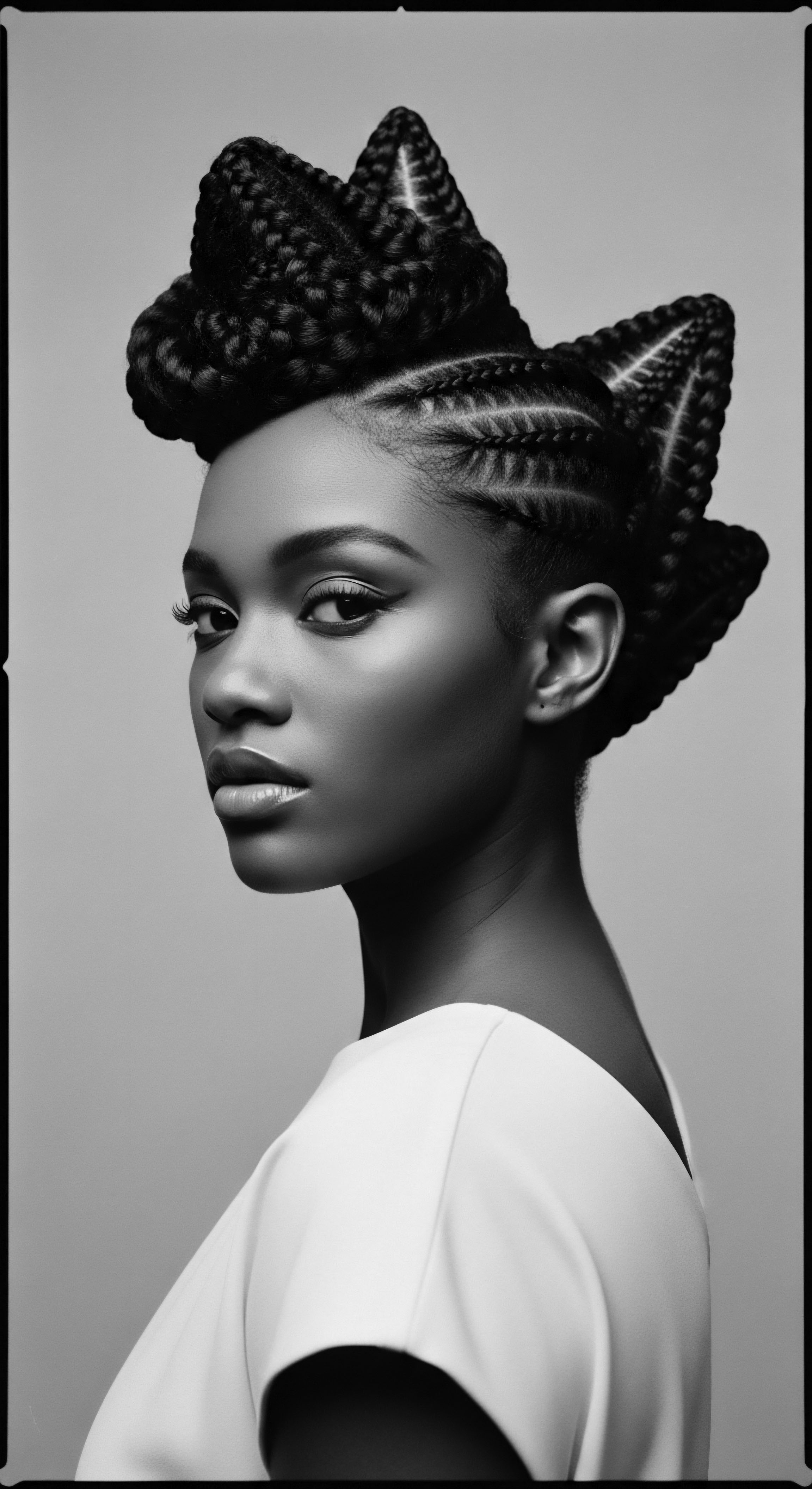
A Lexicon of Longevity ❉ How Does Traditional Care Define Hair Strength?
The language surrounding textured hair care is rich with terms born from both scientific inquiry and traditional understanding. When discussing how the Basara Chebe practice influences length retention, terms such as Moisture Retention, Elasticity, and Cuticle Reinforcement become paramount. Traditionally, these concepts might have been understood through observations of hair’s feel and appearance.
A strand that stretches without snapping, that glistens with a healthy sheen, was recognized as strong and well-tended. The Chebe tradition embodies these observations through its consistent application, creating a protective coating that minimizes the common culprits of breakage.
- Croton Zambesicus ❉ Often called Lavender Croton or the Chebe tree, its seeds form the primary component, lending moisturizing and strengthening properties.
- Mahllaba Soubiane Seeds ❉ These come from a cherry tree native to Chad, contributing antioxidants and strength.
- Cloves ❉ Included for their stimulating properties and contribution to scalp health.
- Missic Stone ❉ An aromatic resin often used for fragrance.
- Samour Resin ❉ Also known as gum arabic, from the acacia tree, helps bind the mixture.
| Hair Structure Component Cuticle (Outer Layer) |
| Traditional Understanding of Its Needs Smoothness, integrity, shield against environmental elements. |
| Chebe Practice's Influence Forms a protective barrier, reducing exposure to friction and external stressors. |
| Hair Structure Component Cortex (Inner Core) |
| Traditional Understanding of Its Needs Strength, elasticity, moisture balance. |
| Chebe Practice's Influence Indirectly supported by moisture sealing; less breakage means a stronger, less compromised core. |
| Hair Structure Component Hair Shaft (Entire Strand) |
| Traditional Understanding of Its Needs Resistance to breakage, softness, manageability. |
| Chebe Practice's Influence Coating action strengthens the entire length, allowing hair to withstand manipulation. |
| Hair Structure Component The Basara tradition intuitively addressed these needs, leading to impressive length retention. |
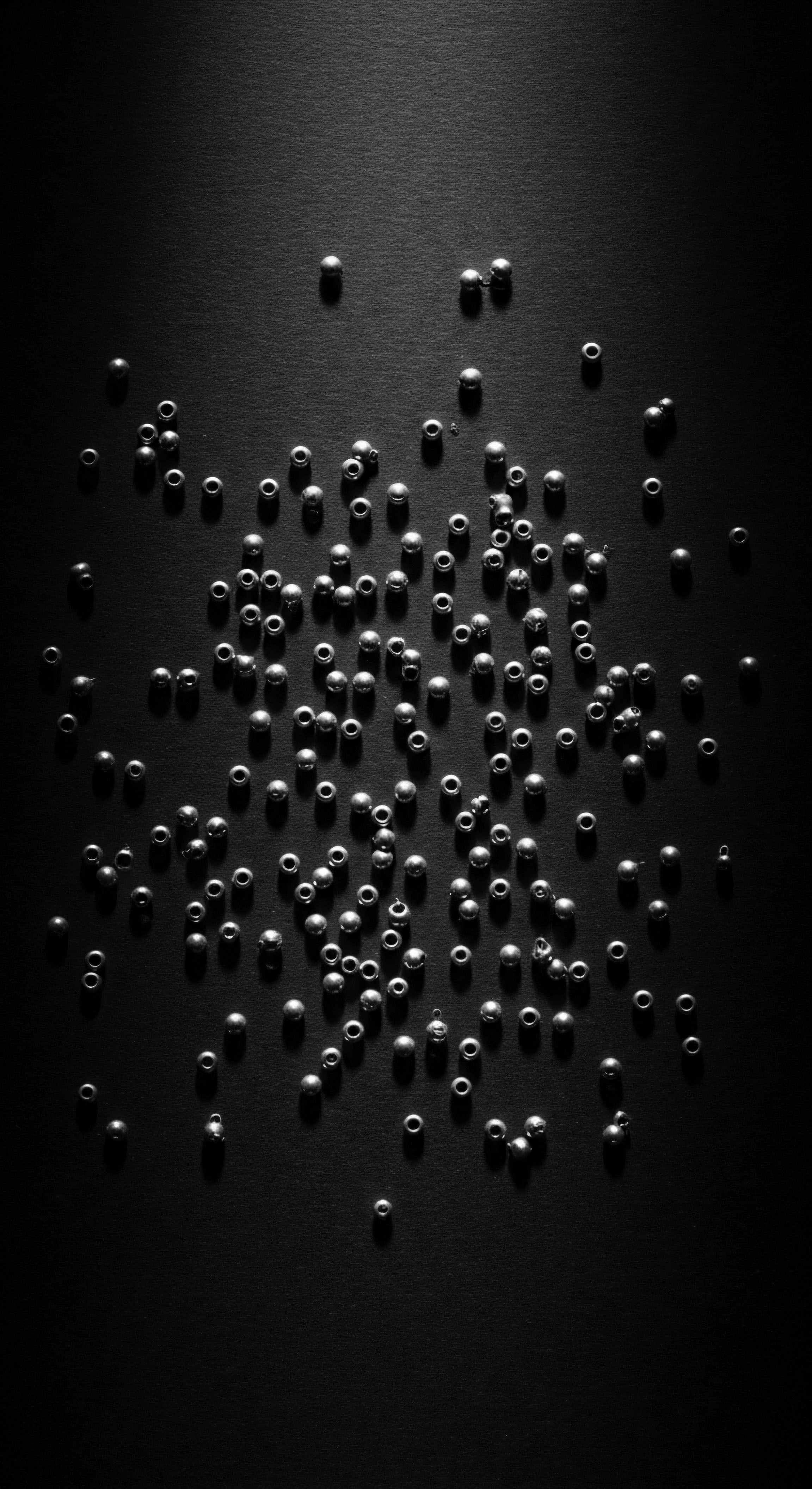
Ritual
The heart of the Basara Chebe practice beats in its ritualistic application, a method honed through generations that transcends a mere beauty regimen. This is an act of care, a repetitive motion steeped in purpose, designed not for quick absorption into the scalp, but to coat, protect, and fortify the hair shaft itself. It is a living tradition, a testament to the ingenuity of communities who learned to work with what the earth provided, transforming indigenous herbs into a potent fortifying mixture.

Ancestral Methods of Application
Traditionally, the Chebe powder is mixed with water, natural oils, and butters—often beef tallow, though plant-based oils are used today—to create a rich, thick paste. The application is meticulous ❉ hair is sectioned, dampened, and each strand, from mid-length to ends, is generously coated with the mixture. The scalp is generally avoided to prevent buildup. After application, the hair is typically braided into a protective style, such as the Gourone, a traditional Chadian style of thick plaits.
This layering and braiding process is repeated periodically, sometimes weekly or every few days, without fully washing out the previous application, simply adding more to reinforce the protective layer. This consistent, low-manipulation approach is crucial.
The repeated application of Chebe paste forms a shield, allowing textured hair to grow without succumbing to the everyday stressors that cause breakage.
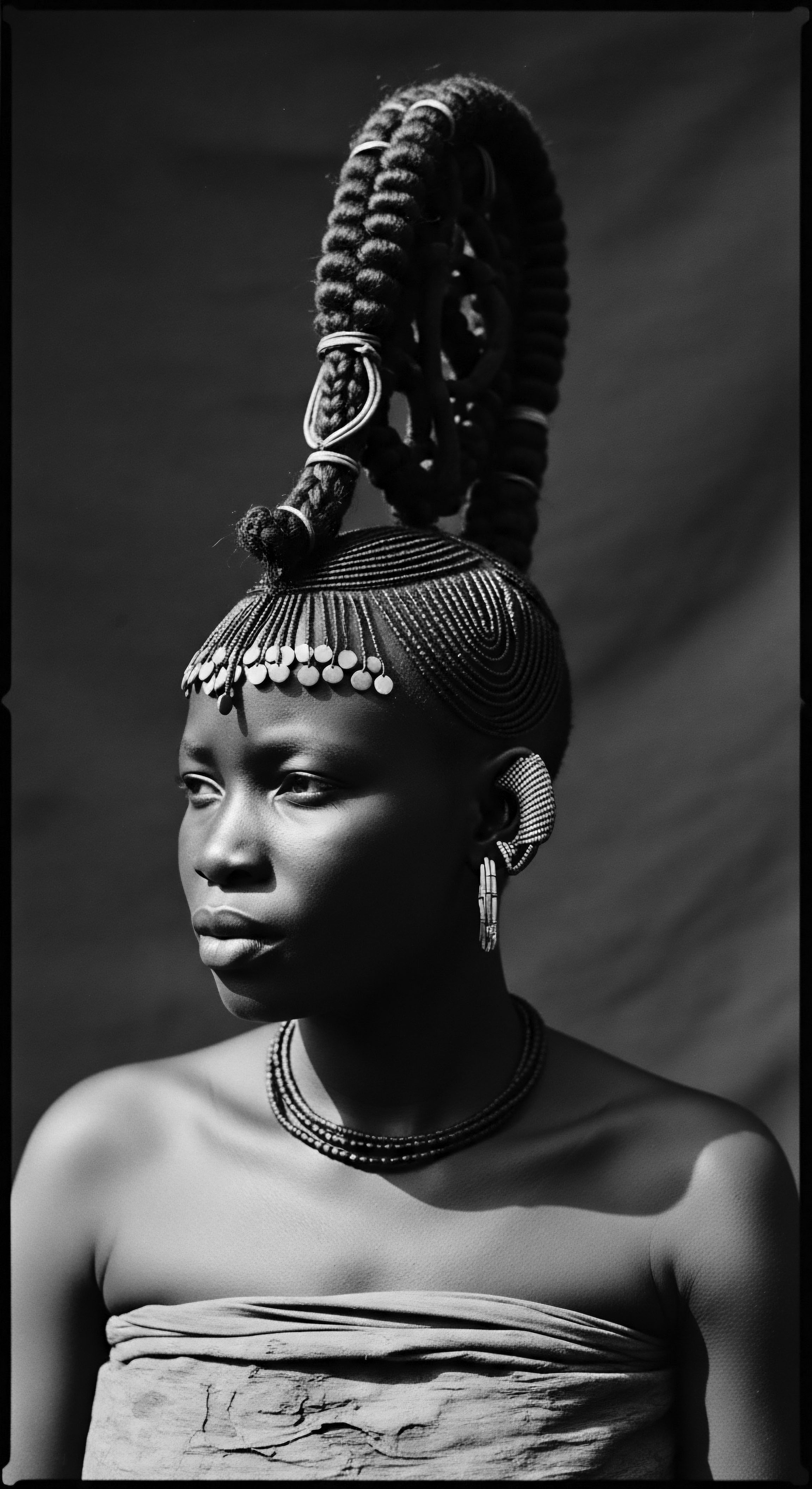
How Have Traditional Styling Practices Supported Length Retention?
The Basara Chebe practice is intrinsically linked with Protective Styling. The application of the Chebe mixture is almost always followed by braiding or twisting the hair. These styles, ancient in their origin, serve a vital purpose beyond aesthetics. They shield the delicate textured strands from environmental aggressors, reduce tangling, and minimize the need for daily manipulation, which is a significant cause of breakage in coily hair.
Consider the historical context of protective styles across African cultures. Braids, for instance, have roots dating back to 3500 BC, serving as indicators of wealth, marital status, age, and tribal affiliation. The practice of braiding hair after Chebe application extends this legacy, turning a functional act into a cultural expression of care and preservation.
The braids act as a casing, holding the Chebe mixture close to the hair shaft, allowing it to work its magic by maintaining a humid, protected environment for the strands. It speaks to a profound understanding of hair health that existed long before modern cosmetology.
The concept of “low manipulation” is fundamental here. By keeping the hair in a braided state for extended periods, the constant combing, styling, and exposure to friction that can lead to mechanical damage are dramatically reduced. This deliberate approach allows hair to grow without interference, retaining the length that would otherwise be lost to breakage. This mirrors observations from other traditional African hair care philosophies where minimizing manipulation is a widely accepted path to length preservation.
The tools used in traditional Chebe application are often simple ❉ hands, a mixing bowl, and perhaps a wide-tooth comb for detangling before application. The efficacy lies not in complex devices, but in the careful, consistent process itself, a process passed from mother to daughter, elder to youth, cementing community bonds around shared beauty rituals.

Relay
The enduring legacy of the Basara Chebe practice, now reaching across continents, forces a re-evaluation of how we understand hair care. This ancient tradition, while seemingly simple, functions with a sophisticated understanding of hair mechanics, often validated by modern scientific inquiry. The focus on length retention, as opposed to direct growth stimulation, positions Chebe as a powerful ally for textured hair, which, despite growing at comparable rates to other hair types, often struggles to show visible length due to its susceptibility to breakage.
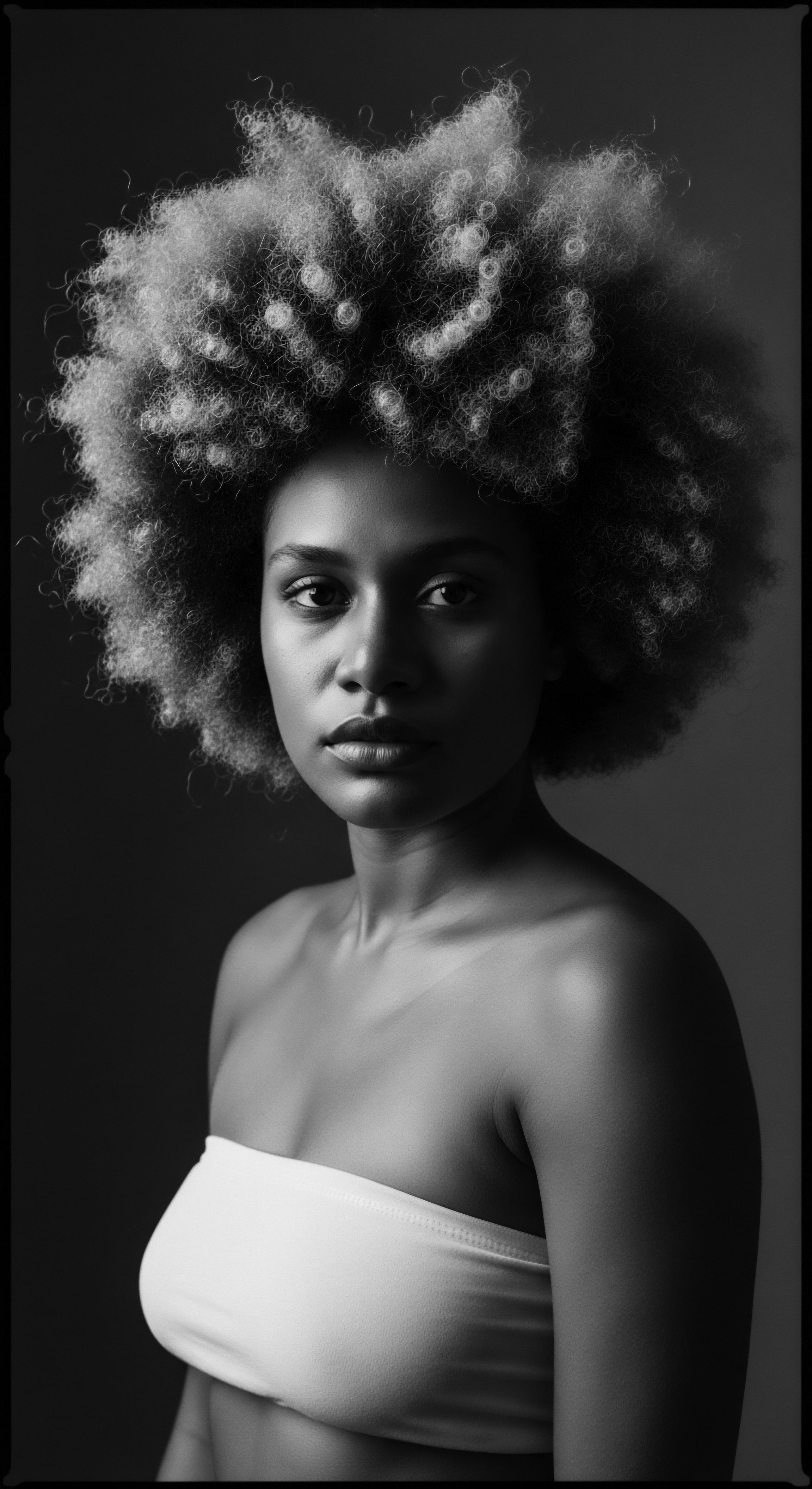
What is the Biophysical Mechanism of Chebe’s Influence?
At its core, the Basara Chebe practice influences length retention by creating a remarkable Protective Barrier around the hair shaft. This barrier works primarily through two key biophysical mechanisms ❉ moisture sealing and mechanical reinforcement.
- Moisture Sealing ❉ The Chebe mixture, particularly when combined with traditional oils and butters, coats the hair strands, effectively trapping hydration within the hair shaft. Textured hair, especially highly coily types, experiences rapid moisture loss due to its open cuticle structure. By reducing water evaporation, Chebe maintains hair’s internal moisture balance. Science confirms that well-hydrated hair possesses significantly more Elasticity, allowing it to stretch without snapping. This pliability is paramount for preventing breakage during styling, detangling, or everyday movement.
- Mechanical Reinforcement ❉ The botanical compounds within Chebe powder, including proteins, fatty acids, and antioxidants, adhere to the hair’s outer layer, the cuticle. This external layer, often raised and vulnerable in textured hair, becomes strengthened and smoothed by the Chebe coating. Research in cosmetic chemistry suggests that botanical compounds rich in lipids and proteins can indeed fortify the cuticle, making strands more resistant to environmental stressors, friction, and manipulation. This physical reinforcement means the hair is less prone to splitting, fraying, and snapping, which are common culprits in length loss for textured hair.
It is important to clarify that Chebe powder does not directly stimulate hair growth from the scalp; its benefit is in preserving the hair that already grows. The observed “growth” is, in essence, Length Preservation. When breakage is minimized, the hair’s natural growth becomes visibly apparent, leading to the perception of longer, healthier hair over time. The wisdom of the Basara women lies in their intuitive understanding that protecting existing hair is the most effective way to attain and maintain remarkable length.
Consider the climate of Chad, characterized by extreme dryness and high temperatures. In such an environment, moisture loss from hair would be significant. The Basara Chebe practice directly counters these harsh conditions, acting as a profound defense against desiccation and mechanical wear. This ancestral ingenuity showcases a profound understanding of environmental challenges and how natural resources could be utilized to overcome them.
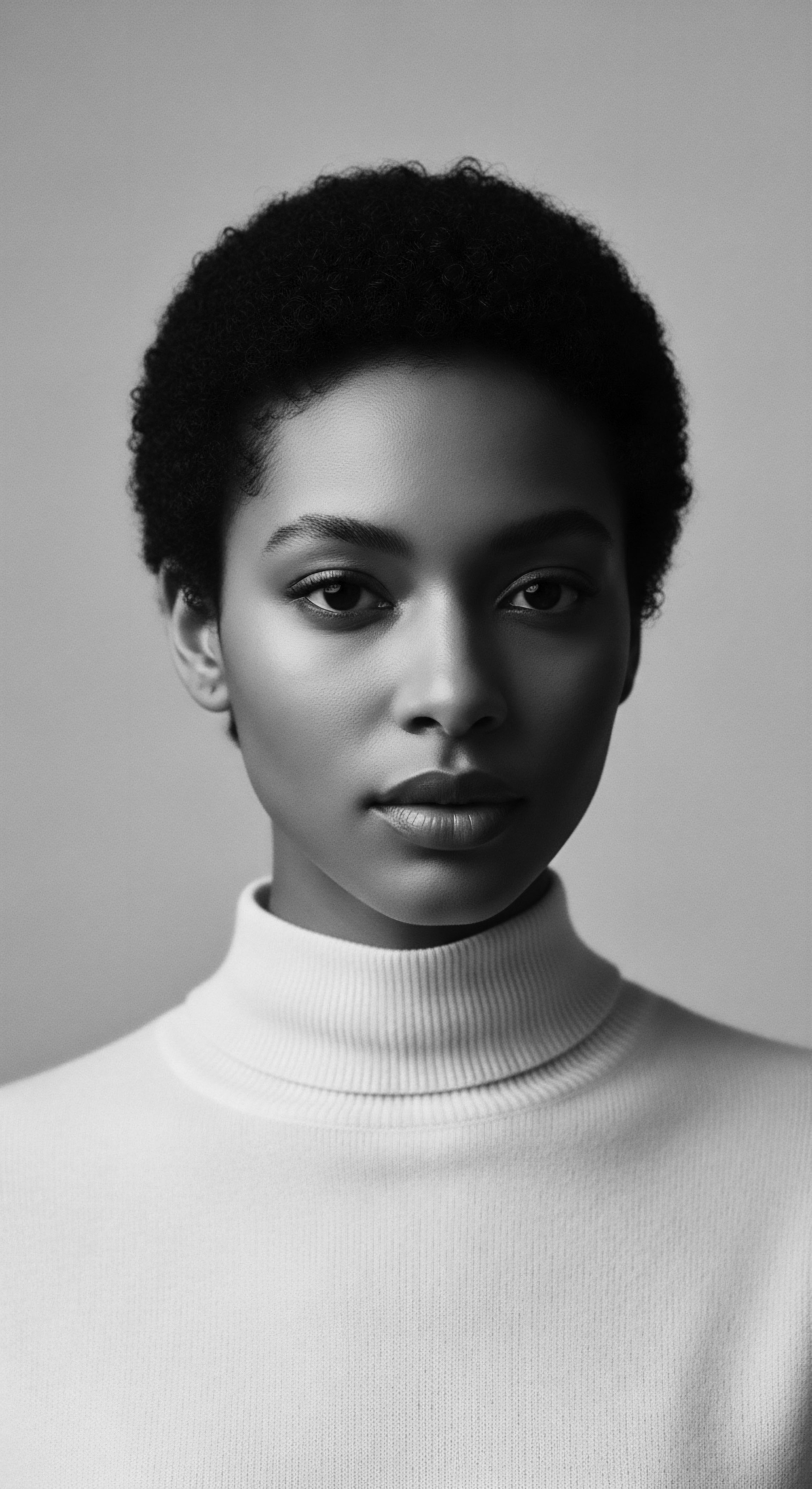
Does Ancestral Wellness Influence Modern Hair Care Understanding?
The Basara Chebe practice extends beyond purely physical effects; it embodies a holistic approach to hair care deeply rooted in ancestral wellness philosophies. The act of communal hair dressing, often involving mothers, sisters, and daughters, speaks to the social bonding and cultural significance inherent in these traditions. Hair in many African cultures is not simply an appendage; it is a symbol of identity, femininity, vitality, and even spiritual connection.
The emphasis on natural ingredients aligns with a broader movement towards plant-based products, moving away from synthetic chemicals. This contemporary shift validates the long-standing preference for natural remedies in ancestral practices. The Basara tradition serves as a living case study of how consistent, nature-aligned care can yield extraordinary results without relying on laboratory-engineered compounds. For generations, the Basara Arab women have passed down their specific blend, a testament to its efficacy within their cultural context.
The tradition’s influence on length retention offers a compelling statistical reality. Anthropological studies from the University of Cairo have documented how Chadian women maintain their hair length, often reaching their knees, despite harsh desert conditions that would typically cause severe dryness and breakage (WholEmollient, 2025). This observation underscores the practice’s powerful efficacy in real-world, challenging environments.
| Traditional Principle Moisture Retention (Chebe paste application) |
| Scientific Correlation Hydrophobic coating reduces Transepidermal Water Loss (TEWL). |
| Impact on Length Retention for Textured Hair Prevents dehydration, maintaining hair's internal water balance and pliability. |
| Traditional Principle Protective Styling (Braiding after Chebe) |
| Scientific Correlation Minimizes mechanical stress and environmental exposure. |
| Impact on Length Retention for Textured Hair Reduces friction, tangling, and external damage, preserving strand integrity. |
| Traditional Principle Ingredient Efficacy (Botanical components) |
| Scientific Correlation Presence of fatty acids, proteins, and antioxidants fortifies cuticle. |
| Impact on Length Retention for Textured Hair Strengthens hair shaft, making it less prone to breakage and split ends. |
| Traditional Principle The wisdom of the past offers valuable blueprints for present and future hair health. |
The Basara Chebe practice aligns with holistic influences on hair health that extend beyond superficial treatments. It emphasizes patience, consistency, and a deep respect for the hair’s natural state. It champions the idea that true hair vitality comes from thoughtful, consistent care, rather than chasing rapid, unsustainable outcomes. This deep understanding of care for textured hair, so prone to fragility, resonates with the challenges faced by Black and mixed-race communities globally, where the acceptance and care of natural hair have often been intertwined with identity and resilience.

Reflection
The Basara Chebe practice stands as a living testament to the enduring genius of ancestral wisdom, a quiet yet powerful counter-narrative to fleeting trends. It reminds us that profound answers to our deepest hair care questions often lie not in complex chemical formulations, but in the timeless rhythms of nature and the knowledge passed from hand to hand across generations. For textured hair, a heritage brimming with strength yet vulnerable to external elements, Chebe is more than a botanical blend; it is a philosophy of preservation.
It encourages us to look inward, to our own legacies of care, and outward, to the rich tapestry of global traditions that celebrate and protect every coil and kink. This practice truly embodies the ‘Soul of a Strand’, a living, breathing archive of resilience and beauty.

References
- Harper’s Bazaar. (2021, August 10). What Is Chebe Powder, and Can it Really Help With Hair Growth?
- Omez Beauty Products. (2024, August 2). The History and Origins of Chebe Powder for Hair Care .
- Planet Ayurveda. (2021, June 17). What is Chebe Powder & How Effective is it As A Hair Mask?
- Premium Beauty News. (2024, July 3). Ancestral hair-paste ritual gains new life in Chad .
- SEVICH. Natural Hair Care ❉ Understanding Chebe Powder and Chebe Oil .
- SEVICH. The Cultural Background and History of Chebe Powder .
- The Zoe Report. (2022, May 14). Chébé Powder’s Ancient Roots Could Be The Key To Long, Strong Hair .
- WholEmollient. (2025, March 13). The Forgotten Wisdom of Chebe & Qasil ❉ What Modern Hair Care Is Missing .
- Chrisam Naturals. (2024, November 7). Chebe Powder for Hair Growth and Health .
- Elsie Organics. (2022, February 25). Chebe Powder ❉ Everything You Need to Know .
